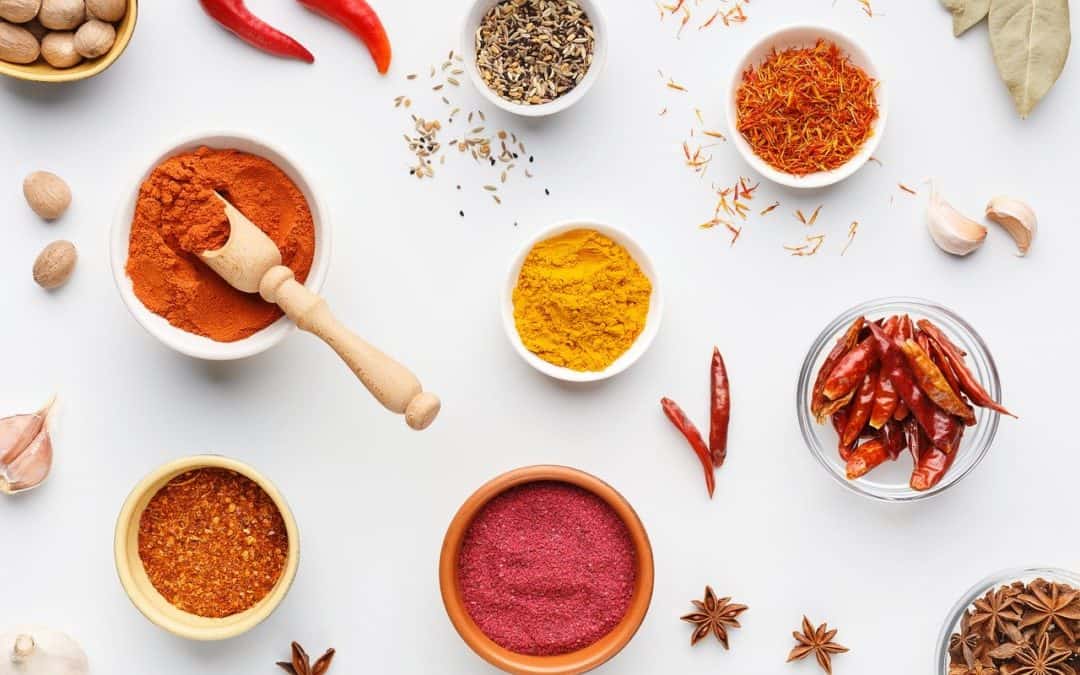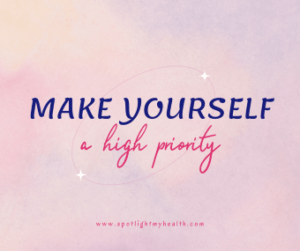Certain spices may have health benefits. There are four that I keep on hand because of all the good things they can do for our bodies, from healing to helping us feel better. Due to the relative ease with finding honey, ginger, cinnamon and turmeric you will find them in most kitchens today. All four have been used medicinally by the Chinese and with Ayurveda (India) medicine for centuries.
However, even though each of these herbs/spices are considered very beneficial, I’m not a doctor, so everyone needs to discuss each of these spices with their personal doctor. It’s also a good idea to ask your doctor about possible interactions with any other medications or supplements you may be taking. There is also no standardized dosage for any of them, so be sure to ask your doctor how much would be safe for you to take.
Inflammation
Chronic inflammation is considered a leading ailment in today’s society. It’s believed that inflammation plays a big roll in causing conditions such as heart disease, cancer and diabetes. Inflammation worsens symptoms like rheumatoid arthritis, and some autoimmune conditions. Several spices have health benefits; one is helping with inflammation.
When purchasing any of these spices, get each as close to raw as possible. Make sure to get them from a reputable company so that you get the full benefits each spice offers. No imitations!

HEALTH BENEFITS OF CERTAIN SPICES: GINGER and TURMERIC
First on my list, to keep in your home, is Ginger and Turmeric. Both are flowering plants that originated in China and have been used for centuries there and in India, then later in Europe. Each has very powerful anti-inflammatory agents that help with pain. Ginger and turmeric are being studied for their use with pain. It was found that the “curcumin” in turmeric is really effective at decreasing pain caused by arthritis.
Many also take one or the other of these two spices or both at the first onset of a cold or flu symptoms.
Ginger
Ginger has long been known to help with stomach issues and heartburn, just to name a few of the ailments you can use ginger for.
Have you ever wondered why people drink ginger ale when their stomach is upset? Could it be the ingredient found in the drink (ginger) is known to be effective at soothing the stomach and helps reduce nausea.
More recently, there have been several studies done that show promising benefits of ginger when used to help fight cancer, especially in gastrointestinal areas. Because we’ve known for years about the benefit of using ginger to help with upset stomachs, it’s now beginning to be used to help with the nausea caused by chemotherapy.
Ginger is also being widely used for pregnancy nausea. There have been studies showing the benefits of ginger when used by those with osteoarthritis, due to its anti-inflammatory properties.
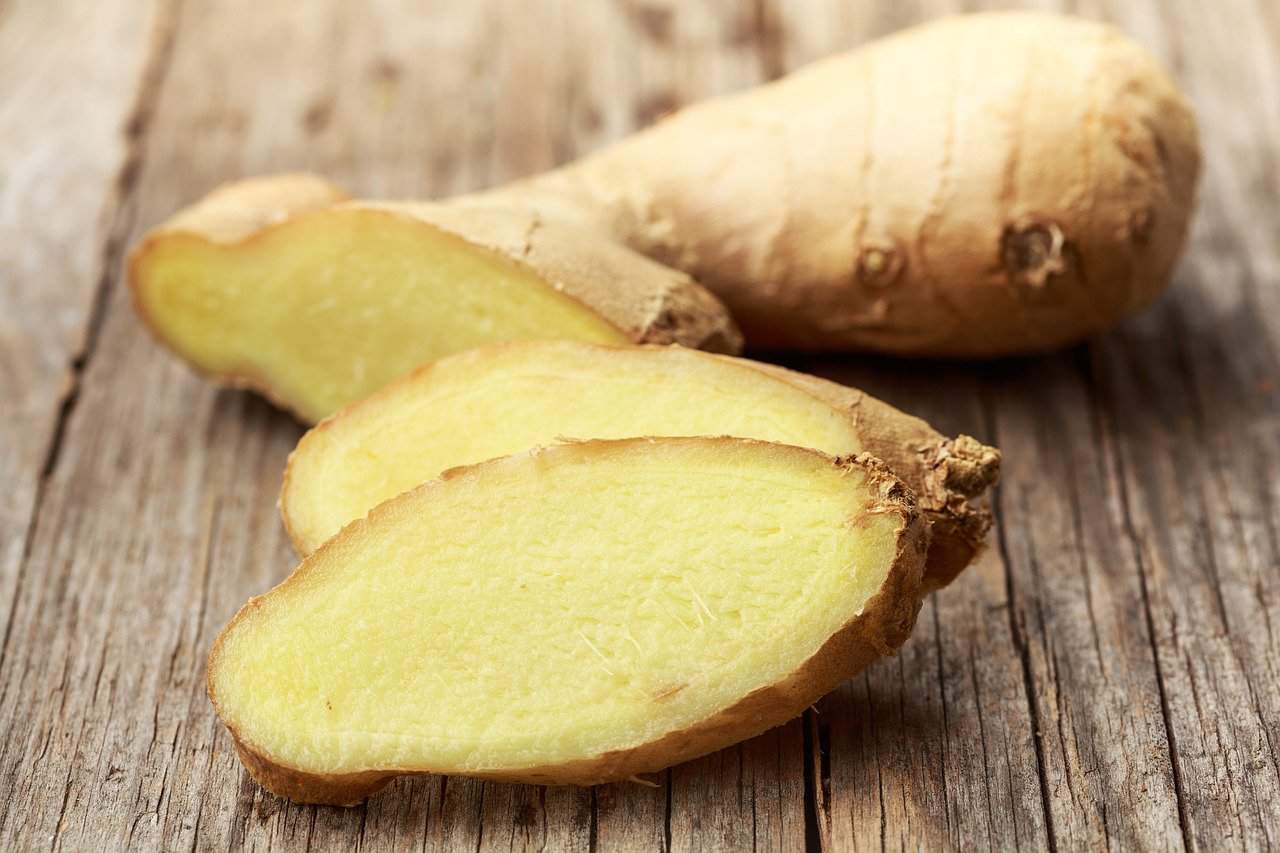
Turmeric
Turmeric is an anti-microbial that attacks bacterial and viral infections and destroys both these types of infections. It has been one of the world’s most powerful healing spices for a very long time. The active ingredient, curcumin, has been known for centuries to be useful for treating a range of conditions such as immune system support and for inflammation disorders such as arthritis. Because of the ability to lower inflammation, turmeric could help reduce the risk of type 2 diabetes and aids in treating several chronic conditions.
That being said, most supplements don’t have enough curcumin in them to be effective and it’s also hard to absorb. Your best bet is to get a supplement that has piperine in it as this helps with absorption of the curcumin.
Other Ailments
Other ailments that this spice has been used for and known to help is respiratory system illnesses; preventing and/or stopping the growth of prostate, breast, lung, skin and colon cancer. It can also be used to detox your liver. Studies are being done with Turmeric in reference to preventing and/or slowing the progression of Alzheimer’s disease. As a natural healer, this helps do away with the side effects of prescribed drugs given for these ailments.
Both ginger and turmeric can be added to many dishes as they can be consumed fresh, dried or ground. I’ve also gotten them in supplement form.
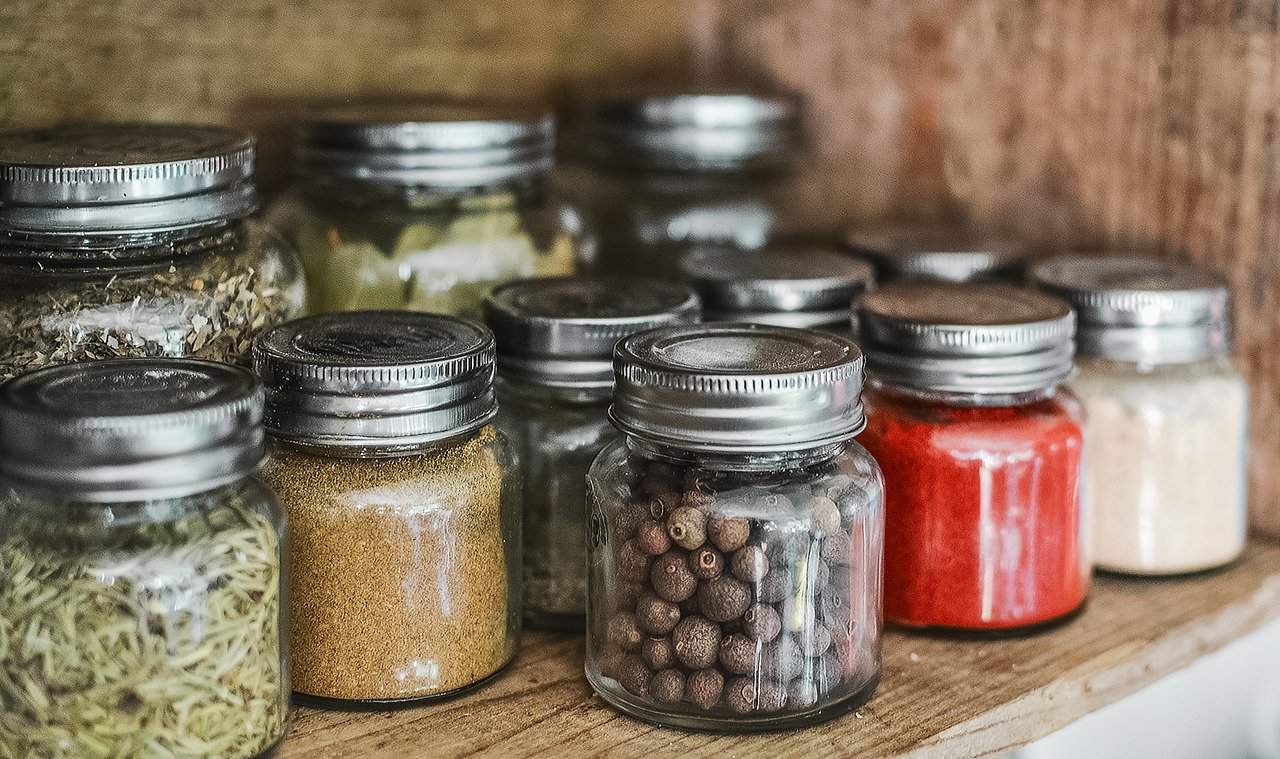
HEALTH BENEFITS OF MANUKA HONEY AND CINNAMON
One of my favorite household kitchen items to keep at home is manuka honey. I keep this on hand in our first aid kit because I know first-hand the absolute wonderful medicinal value this honey has. The right kind of honey, which I’ll call medicinal honey for lack of a better name, can be used for numerous ailments that include, coughs, indigestion, flu, wounds and burns. Honey also has anti-microbial elements that help fight off infections.
Being naturally sweet and thick, honey is loaded with good compounds, if left nearly untouched. We benefit from all the vitamins, essential fatty acids, micronutrients, amino acids and antioxidants found in raw honey. And as soon as these “goodies” hit your system, they go to work.
Honey, Enzymes and Hydrogen Peroxide?
How does honey help? One of the enzymes, found in honey, when hit with oxygen, turns to hydrogen peroxide. What is one of the first things we put on a scratch, cut or any type of wound? We pull out the old hydrogen peroxide bottle. It actually dissolves the cell walls of bacteria, so that means that is also what honey would do.
There is controversy about honey and which kinds are most helpful for our health, so let me explain the different types. Honey is most often seen as regular, raw and organic.
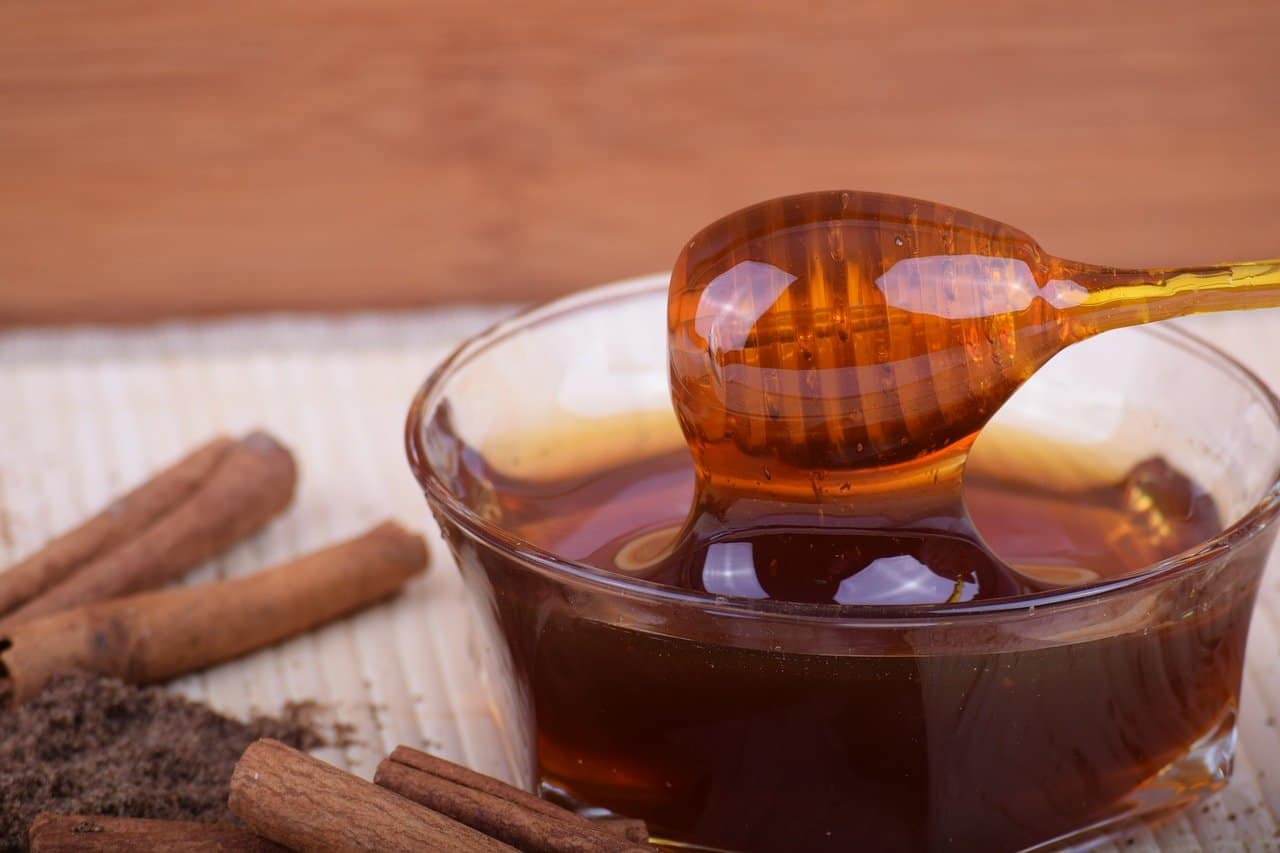
Raw
This type of honey means it has been taken straight from the hive, poured over a nylon or mesh cloth to separate the impurities and then packaged. No heating and no pasteurizing. It is considered the purest honey and contains a wide variety of nutrients including numerous plant compounds. That translates to antioxidants. We all know that antioxidants are good for all sorts of health benefits such as lower risk of heart disease, certain cancers and lowering inflammation.
Regular
Regular honey has been pasteurization and filtered before bottling. Being pasteurized destroys the yeast found in the honey from the high heat used in the process. This makes the honey smoother and it can stay on the shelf longer and somewhere in this process, the manufacturer may add more sugar. And consumers tend to like the clearer liquid honey.
Some honeys go through an ultra filtration to make it even more transparent and smooth. It may look more appealing, but unfortunately, any processing destroys all the good and beneficial nutrients that are naturally found in honey.
Organic
This type of honey is subject to different regulations in different countries. In the US, if honey is classified as “raw” it’s a no-no for it to be pasteurized or processed. Organic honey has to come from a bee farm that meets USDA standards for organic livestock. (Yep, I said livestock)
Basically, that means that not only the honey, but the bees and flowers also cannot come into contact with pesticides, chemicals or other substances that are no-no’s with the USDA.
That being said, organic honey can still be pasteurized or processed through filtration; therefore, taking all the “good stuff” out of the organic honey.
Now, I know there are those that will question how any type of sugar can be good for you. But think about it. It doesn’t take a lot of honey to help with an ailment. Most of us realize that our bodies can tell the difference between a spoon of raw honey and processed sugar; therefore, consuming and using it very differently, once ingested.

I KNOW, FIRST HAND, HOW GOOD HONEY IS FOR BURNS
My son and hubby decided to buy motorcycles last year and when my son got home with his first, I went outside to take a look and of course, wanted to sit on it, at least. Now it was summer, I had shorts on and had never been on a motorcycle, so I had no idea I could get burned just sitting on it, but I did.
It never occurred to me that the exhaust would get so hot and that the manufacturers wouldn’t have covered it somehow so people wouldn’t get burnt. (No snickers from the peanut gallery, please; I know nothing about motorcycles).
My son tried to stop me from hopping on, but in this case, I beat him to it and immediately burned the back of my right calf. You can see the image above. It’s not pretty and it didn’t feel pretty either. That blister formed almost immediately. I decided to try manuka honey on it. Being skeptical, I figured it couldn’t hurt until I got to the doctor.
What Did the Doctor Think?
I went to the doctor the next day. The doctor asked what I had put on the burn. After telling him, he told me to just keep applying the honey every day and keep a bandage on it for the next week and see where it’s at then. I couldn’t believe I was hearing my doctor say to just keep using the honey. Having a second-degree burn, I’m glad I used the honey because I was shocked at how much it helped heal my burn. Today you have to look hard to see any kind of left over marking on my skin from that burn.
Manuka honey actually comes from New Zealand/Australia. The honey bees feed on the manuka bush that is only found in these two countries.
I was able to find the manuka honey on Amazon and at the drugstore.
If you need some downtime, check out how to set-up your own personal retreat space.
Cinnamon
I love the smell of cinnamon, not to mention the divine taste in baked goods. But even though most of us have used cinnamon in the kitchen, it actually has other uses. In other cultures, outside of the US, this spice is considered to have exceptional medicinal properties.
It helps the body fight off infections, repairs tissue damage and protects the body from cell damaging agents. It’s also great at fighting bacterial and fungal infections. This is because cinnamon is loaded with antioxidants.
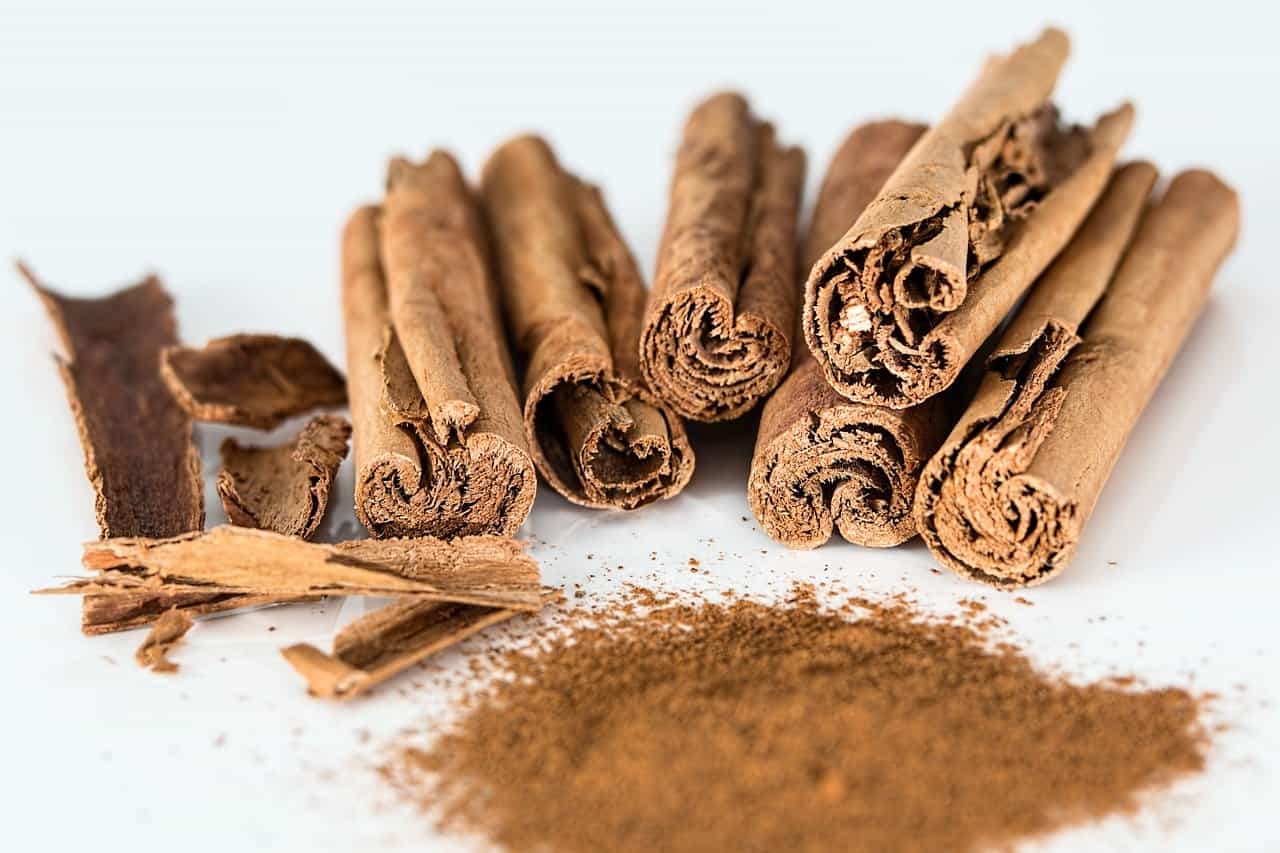
ASHWAGANDHA
I’ve included this spice/herb because it fits in with the spices I’ve already written about. It may not be as well known, but I think it could be up and coming in the arsenal against anxiety. This herb has been used for centuries in other parts of the world. In Ayurvedic medicine (Indian), it has been used for over 2500 years. Some of its benefits include helping to lower symptoms of anxiety. Research is beginning to show ashwagandha as having strong anti-cancer agents, due to its antioxidant properties specifically in the colon, lungs and stomach.
Lowering blood sugar levels along with lowering cortisol levels are two other health benefits of this herb.
Flowering Scrub
Ashwagandha grows as a flowering scrub in India, the Middle East and parts of Africa where it grows with yellow blooms. Because it helps the body adapt to stress, it is classified as an adaptogen. It may also help with epilepsy and infertility. Doctors don’t yet know why this herb is so beneficial, but believe it is due to its hard-working anti-inflammatory properties.
The spice has been proven to have a positive effect on a person’s overall mood by up to 25%. It helps those struggling to keep blood sugar at normal levels, which in turn can help those battling bad cholesterol.
If you need some downtime and want to know some quick ways to de-stress, this post is for you.
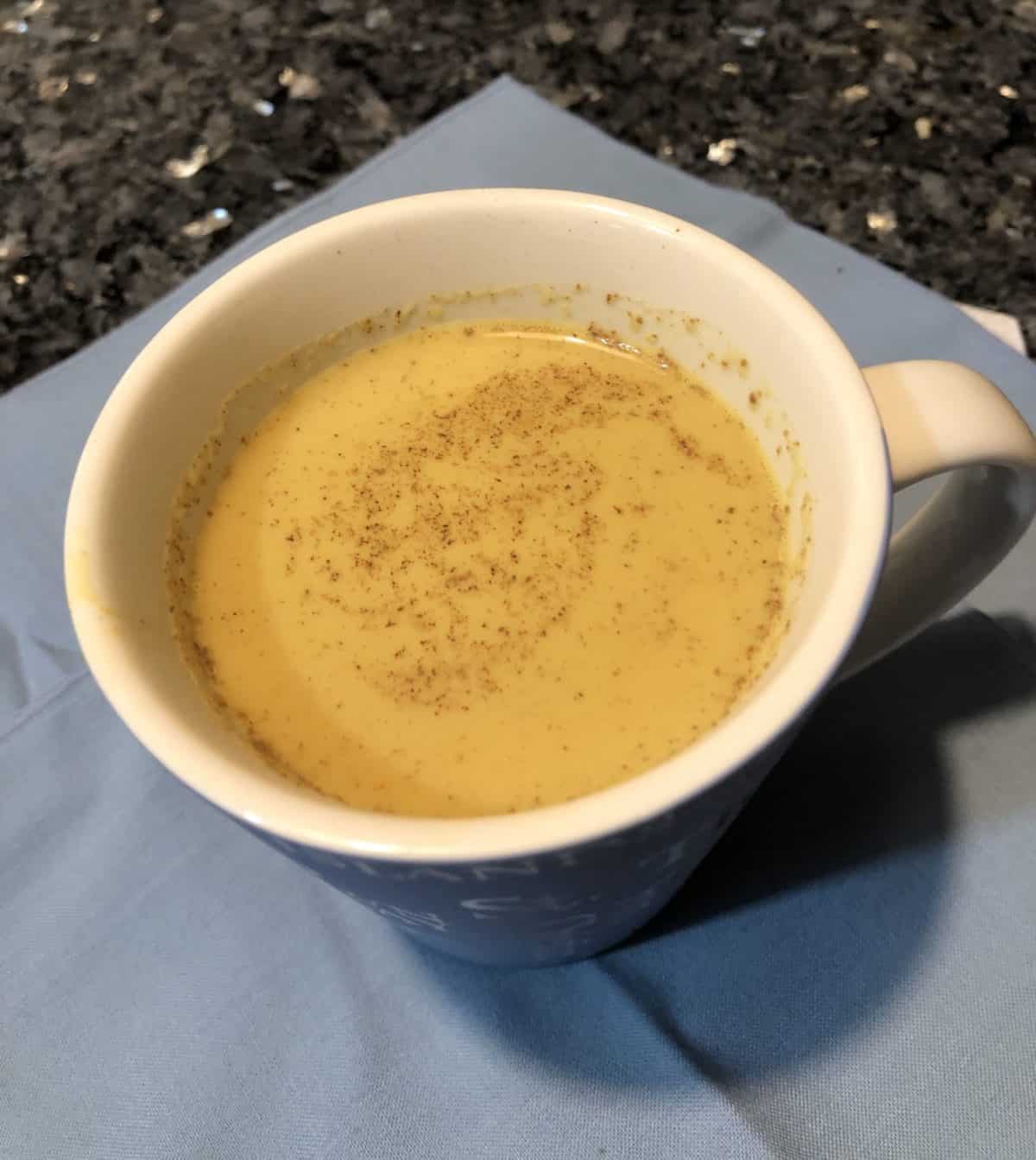
Try a Cup……
One of the best ways to add at least four of these spices to your diet, besides cooking with it, is with a cup of tea, milk, latte or lemonade, if you prefer, rather than as a supplement. The list of drinks made with these spices are numerous. You can find plenty of these recipes on Pinterest.
I simply use a cup of milk (1%, 2% or almond, all taste good), about a half teaspoon of turmeric, then add ginger and cinnamon to taste. Lastly, I add in a teaspoon (to taste) of instant coffee. After I pour this mixture into a mug, I add the raw honey. I make this in a small saucepan on the stove so that everything combines nicely. Try this and then you can adjust the flavors the way you’d like.
Whisk or stir vigorously until thickening begins and pour into your cup when it is the thickness you want. Do this on medium heat and don’t let it scald; you’ll end up with the taste of burned milk—Yuck! If you don’t want the honey, ginger or cinnamon, you can leave it out or just sprinkle the cinnamon on top of the drink, once poured into a cup. So very good. Love this as my morning coffee and my joints are getting the benefit the rest of the day!
You could also make this cold by putting all ingredients in a blender with a few ice cubes and blend till frothy. A dash of cinnamon on top with a straw—Yum!
THE BOTTOM LINE
I take both cinnamon and turmeric daily, under supervision of my doctor. I think they help my arthritis, especially in my hands.
All of these spices/herbs seem to have medicinal values that science is trying to catch up with or explore. However, before using them for anything other than in your kitchen, check with your healthcare provider for dosage amounts, interaction with other meds you may be taking and any possible side effects.
Stay Awesome!
Cher
Relevant Reading
Herbs for Female Hormones
Basics of Essential Oils
Marijuana vs Cannabis vs Hemp
If you enjoyed my post, pin it and share it—it would be a wonderful compliment!!
Check out some of my other posts to the right!

